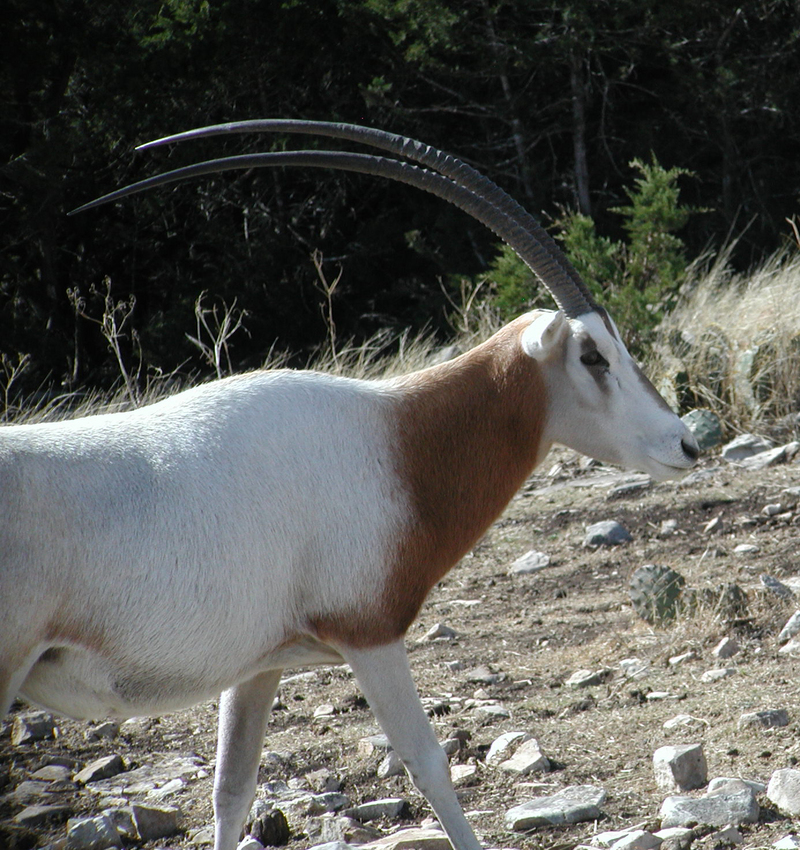|
| Query: Oryx dammah | Result: 1st of 26 | |
Scimitar-Horned Oryx (Oryx dammah) - Wiki
| Subject: | Scimitar-Horned Oryx (Oryx dammah) - Wiki
| |

| Resolution: 1386x1473
File Size: 1025247 Bytes
Date: 0000:00:00 00:00:00
Camera: C3040Z (OLYMPUS OPTICAL CO.,LTD)
F number: f/5.0
Exposure: 10/3200 sec
Focal Length: 210/10
Upload Date: 2008:03:05 09:16:59
|
Scimitar Oryx
From Wikipedia, the free encyclopedia
Order: Artiodactyla
Family: Bovidae
Subfamily: Hippotraginae
[Photo] Scimitar-Horned Oryx (Oryx dammah) at the Wildlife Ranch in San Antonio, TX. URL: http://en.wikipedia.org/wiki/Image:Scimitar-Horned_Oryx.jpg
The Scimitar Oryx, or Scimitar-Horned Oryx, (Oryx dammah) is a species of oryx which formerly inhabited the whole of North Africa. Today conflicting reports exist as to whether it is extinct in the wild, or whether small populations survive in central Niger and Chad.
Appearance
The Scimitar Oryx is just over a metre at the shoulder and weighs around two hundred kilograms. Its coat is white with a red-brown chest and black markings on the forehead and down the length of the nose. The horns are long, thin and parallel and curve backwards (like a scimitar) and can reach a metre to a metre and a quarter on both sexes, male and female.
Ecology
Scimitar Oryx natively inhabit steppe and desert where they eat leaves, grass and fruit. They form herds of mixed sex containing up to seventy animals. Formerly they would gather in groups of several thousand for migration. Scimitar Oryx can survive without water for many weeks, because their kidneys prevent loss of water from urination and they can modify their body temperature to avoid perspiration.
Conservation
Scimitar Oryx were hunted for their horns, almost to extinction. Where once they occupied the whole Sahara, they are now considered to be extinct in the wild, although there have been unconfirmed sightings in Chad and Niger.
A global captive breeding programme was initiated in the 1960s. In 1996, there were at least 1,250 captive animals held in zoos and parks around the world with a further 2,145 on ranches in Texas. A herd exists in a fenced nature preserve in Tunisia, and is being expanded with plans for reintroduction to the wild in that country.
http://en.wikipedia.org/wiki/Scimitar-horned_Oryx
| The text in this page is based on the copyrighted Wikipedia article shown in above URL. It is used under the GNU Free Documentation License. You may redistribute it, verbatim or modified, providing that you comply with the terms of the GFDL. |
|
^o^
Animal Pictures Archive for smart phones
^o^
|
|

